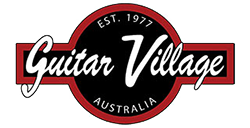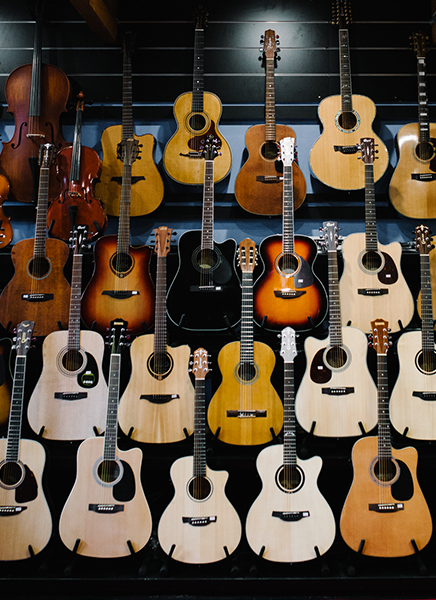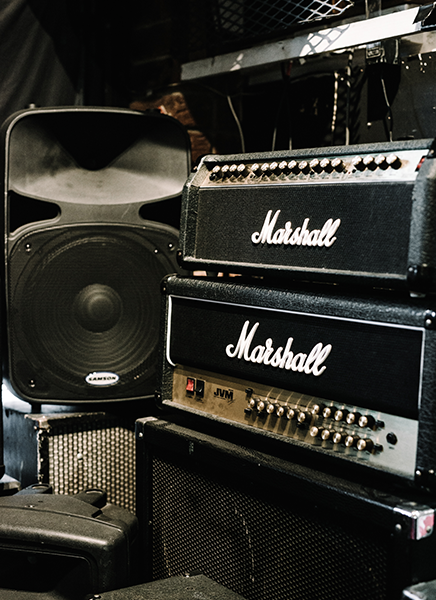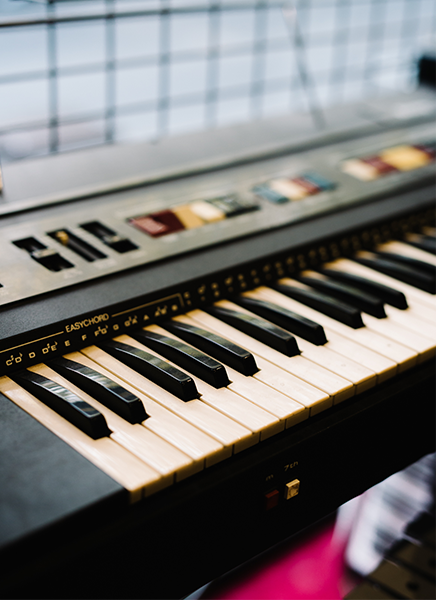The Crucianelli company was founded in 1888 in Castelfidardo by Sante Crucianelli, a former partner of Paolo Soprani and also a pioneer of the regional accordion industry.
Facing the crisis that hit the sector in the early 60′s the company diversified its business in guitar manufacturing following Oliviero Pigini’s example with his Eko company.
The relationship to Eko determines Crucianelli’s whole guitar history. During the glitter celluloid era of the first half-decade the two companies are in tough competition, for every Eko model comes out a matching Crucianelli instrument. From 1965 on both companies increasingly specializes in its own field, Eko focuses on acoustics and solidbodies, Crucianelli on semi-acoustics, and both cooperate with Vox. Technical contributions of Eko and Crucianelli melt together on certain Vox (and even Eko ) models. Olivieri Pigini was planning a merger of both companies’ guitar operations. His sudden death in 1967 didn’t allow the project come to reality.
On the international market any six-stringed thing with a colourful plastic coating is called an Eko. Crucianelli guitars are very often confused with Eko and sold as such. Those guitars seldom confess readily their true origine, they hide inside a maze of brandnames. Some belonged to Crucianelli, especially Élite and the rarer names Elli-Sound and Custom Built. There were brandnames given by the official American distributors, PANaramic (by PANcordion Inc., NYC a accordion company from Ernest F. Deffner.) and Tonemaster (by The Imperial Accordion Co., Chicago), more or less special models supplied in contract manufacturing to big OEMs like Vox and Baldwin, there were the brands applied by American traders such as España, Ardsley, FH, and a crowd of minor U.S. distributors.
España was a brand name used by Buegeleisen & Jacobsonof New York City. This company imported instruments made overseas under its specifications (or meeting its specs) and marketed through various wholesalers or distributors in North America. In its position B&J did not have to care about neither manufacturing nor after-sale warranty, it was just a buy and sell business. Key to success was a long established fame (the company was founded in 1901 or so), a carefully selected product range and a clever marketing policy that focussed on a few proprietary trademarks.
As far as electric guitars are concerned Japanese-made instruments were sorted between the Winston (entry level) and Kent (medium to pretty good quality) brands, regardless of the actual manufacturers (Guyatone, Teisco, Kawai…).European guitars were gathered under the brandname España, first used in the years 1961-1967 for Swedish-made classical guitars supplied by Hagström (). B&J and Hagström had been in relationship as soon as 1932, as Hagström just started production of accordions and was already looking for opportunities to export to the USA.
The name Espana was an obvious reply to the also N.Y.C.-based Hershman Musical Instruments Co. that was by then enjoying a huge success with acoustic guitars made in Gothenburg by Herman Carlsson AB (a.k.a. Levin) and sold in the U.S. under the fake Spanish name Goya. B&J took advantage of the high repute they had granted to Swedish-made guitars and choosed a name that sounded even more Spanish. Sales were soon buoyant, B&J complained they didn’t got enough of those guitars to satisfy demand, so instruments from Finland were also enlisted to enlarge the España section in the B&J catalog. There is no much doubt that Hagström helped to establish the link to this additional sourcing.
In the 60’s second half Buegeleisen & Jacobson also applied the España brand to ES-335 copies from Italy (made by Crucianelly) and Finland, the Finnish ones being distinguished by their glued-in neck and a crown logo. Other than that both ranges were pretty similar. Wether Italian or Finnish supplies were first to be imported in the U.S. ist still unclear. España electrics from Finland are more frequently shown in B&J catalogs and ads, but on the vintage market the Crucianelli versions are at least six times as many. In terms of specs they do not show any difference with those wearing a Élite, Crucianelli or Tonemaster logo.










